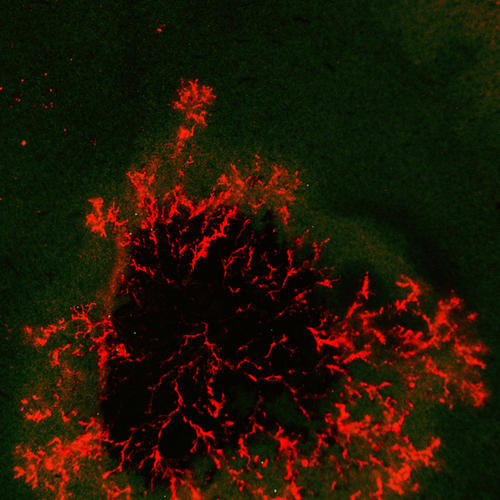
Alex Guyon
@AlexWGuyon
Followers
436
Following
323
Media
31
Statuses
199
PhD student in the Schornack Group @slcuplants. Interested in conserved components of plant-microbe interfaces
Joined March 2020
Excited to share the publication of our latest ‘Commentary’ article : "Metabolic Detour, Symbiotic Delay: Insights from Sinorhizobium meliloti Suppressor Mutants" https://t.co/Q2psiX4jvZ
@slcuplants
@MPMIjournal
1
13
32
#2025ISMPMI check out our finest selection of posters on symbiosis, effectors, Marchantia and barley. @IamJawaharSingh @AlbinTeulet @kos_darius @Rochirmayi
0
9
25
Thrilled to share our latest @biorxivpreprint! This work started during my PhD and was finished together with @JMadhuprakash. We found a Phytophthora infestans L-shaped effector that bridges a host TOL protein to activated NLRs to suppress immunity! https://t.co/1o24A1Rp2s 1/15
1
46
111
Congrats to @_chetan_pandey_ @slcuplants for his Best Poster Award. Very proud of you!
2
6
52
8/ TL;DR: ✅ Phosphoinositide signatures at plant-microbe interfaces are dynamic ✅ Mutualist colonisation reshapes pathogen interface identity ✅ This shift correlates with enhanced resistance, suggesting membrane identity may influence infection outcome.
1
0
9
8/ Beyond just documenting these dynamics, our work asks: 🌱Can we rethink host-pathogen “specialised” membranes as dynamic, context-dependent landscapes? 🔬Are immune evasion strategies vulnerable in complex microbial environments?
1
0
4
7/ So what's going on? We propose that PI4P exclusion from haustoria is a pathogen-driven strategy, likely involving secreted effectors. But during AM symbiosis, trafficking to arbuscules may override this, forcing the pathogen into an interface it didn’t design.
1
0
4
6/ Even more: co-colonisation enhances resistance to P. palmivora. Mutualist presence seems to rewire the pathogen interface.
1
1
4
5/ But here's the twist, during co-colonisation, haustoria begin recruiting PI4P That’s a fundamental shift in membrane identity. And yes - we observed single plant cells simultaneously harbouring both an arbuscule and a haustorium!
1
1
5
4/ Watch it in action! Here’s PI(4,5)P₂ (via biosensor P24Y) tracking fungal growth during AM symbiosis. Captured using @JenMcgaley‘s AMSlide.
2
5
16
3/ In single infections: •PI(4,5)P₂ is tip-enriched in arbuscules but uniform around haustoria. Each interaction has a distinct membrane fingerprint. •PI4P is present at the periarbuscular membrane of the mutualist but absent from haustoria of the pathogen.
1
0
4
2/ Phosphoinositides (PIPs) are key lipids that define membrane identity. We visualised PI(4,5)P₂ and PI4P biosensors from @YvonJaillais in Nicotiana benthamiana during root colonisation by a mutualist AM fungus - F. mosseae and a pathogen - P. palmivora. https://t.co/K408FjJk1Z
1
0
5
1/🚨 New preprint alert! Can mutualists and pathogens co-colonise the same living plant cell and what does that do to the plant membranes that surround these microbes?
3
43
120
Intracellular pathogens can form extensive hyphal structures. Here, the pathogen Phytophthora palmivora (magenta) produces invasive hyphae in a living epidermal cell of a Nicotiana root. The plant surrounds the invader by an 'extra-invasive hyphal membrane' (yellow)📸@AlexWGuyon
1
32
157
We’re thrilled to announce the speakers for our IS-MPMI 2025 satellite meeting: "Building Careers in MPMI through Effective Mentoring" 📍 13 July 2025 • Cologne, Germany 🌟 Sebastian Schornack 🌟 Anne Pfeiffer 🌟 Rosa Lozano-Durán 🌟 Kenichi Tsuda 📢 Join us for inspiring talks
0
10
28
New! An ancient plant symbiotic fungus with distinct features identified through advanced fluorescence & Raman imaging @CStrulluDerrien,R.Wightman,L.P.McDonnell,G.Evans,F.Fercoq,@PaulKenrick2& A. Ferrari @slcuplants @NHM_London @Le_Museum @GrapheneUCam
https://t.co/5FmQcerLf3
1
36
81
Impossible dream: Self- fertilising cereal crops? @cpm_magazine
cpm-magazine.co.uk
Is it possible to create cereal crops that provide their own nutrition? In a bid to find out, CPM talks to researchers...
1
10
30
How do fungi explore a root system over time? Spatial and temporal tracking of the Nicotiana root symbiosis with arbuscular mycorrhiza fungi using MycoRed. Videos and images and optimised Rhizotrons by @Nick_GarciaH Science behind this: https://t.co/pAdKtZSz8n
1
32
110



